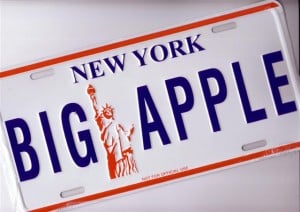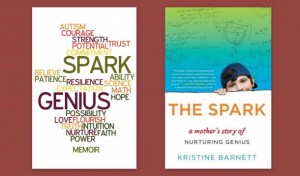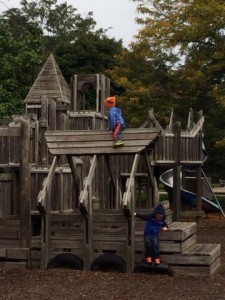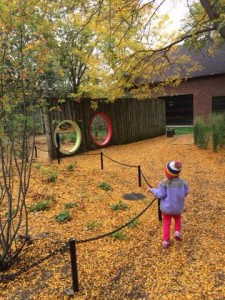Parents will occasionally ask me, “What can I be doing at home to help my child prepare for gifted testing?” or, “What can I be doing at home to best supplement what my child is doing at Cortland?” or, “What can I be doing for the first few months of my child’s new public school environment, where he or she may be ahead of the group and bored?”
Create an environment that supports provocative learning is the best honest answer I provide. We can work toward creating an intelligently chosen, thoughtfully curated school and home environments that encourage and support higher levels of curiosity, “grit” (tenacity over time), and critical thinking. While I continue to maintain that hands-on, exploratory learning that is child-led is still the best and highest form of synaptic connection building, here are more concrete suggestions:
GET PRACTICAL, THINK LONG TERM : WORKSPACE
Home environment–Does your child have a workspace (desk or table) that supports extended work times?
Seating or standing that promotes the development of spinal strength and good posture?
Has appropriate task lighting (they all really like the clamp lamps at school and are used to working with them, IKEA, about $15.)
This space needs to allow for projects to stay out at times (create a “revisit zone” for one or two projects that your child wants to return to over many days.) Storage that your child can access and be in charge of? This area can serve building, tinkering, art, writing, science, etc. and will get your child off onto the best foot for in-home, purposeful creation, work, and exploration.
If you need help creating a child-friendly home workspace that will serve your child’s needs until graduation, talk to Ms. Amy. She has highly-skilled craftsmen as friends and might be able to make a referral.
SETTING UP EARLY LITERACY SUPPORTS
EARLY Reading–Guided Reading, which levels books AA, A, B, C, D and up based on word count, difficulty, frequency, etc. is important. We recommend Newmark Learning for a series of Math, Science, Social Studies, or Classic Tales that will pad your home library and introduce your child to the concept of the “easy” or “guided reader” in a very intelligent way.
(Note: At present, there is no standardized leveling of books for publishers–typically, they don’t like to get too specific on level because then less people will buy it. If you are uncertain of a book’s level, for example, it says Level One on the cover, check the back cover for the Guided Reading level. Not there? Check inside, the first or last few pages. Not there? Google it. “Lego City: All Hands On Deck guided reading level” for example. http://www.scholastic.com/bookwizard/ has a pretty extensive list. Still not sure? Compare the word count and difficulty with a book of the level you are looking for. If it is too hard, save it for later. Guided readers are aimed at getting your child books that set up your child’s early reading success. They should be “just right” and not be too hard or frustrating.)
READING INDEPENDENTLY PAST THE Guided Reading LEVEL J–Most children won’t be reading J and above level books until second grade, but sometimes children read really early, and read with full comprehension and enjoyment. If your child isn’t to this level yet, no worries. He or she will get here when the cognitive time is right. These are still great suggestions for your future toolkit.
Advanced readers need to keep reading for pleasure and for purpose, and find series that he or she really connects with, which sometimes takes a little time. Be patient, and try to tailor books to your child’s interests du jour. Series that children really enjoy in the classroom or during tutoring sessions include:
My First Little House–great historic fiction based on the show you and I remember http://www.booksource.com/Products/Level-J-My-First-Little-House__J-1LH-spc-12-13.aspx
Iris and Walter http://www.booksource.com/Products/Level-J-Iris-and-Walter__J-IRI-spc-12-13.aspx
Young Cam Jansen, a detective series with strong female lead http://www.booksource.com/Products/Level-J-Young-Cam-Jansen__J-YCM-spc-12-13.aspx
Jump Into Genre, a great set with lots of different fables, folktales, and classic stories, this is the second grade level but stronger readers would do fine http://www.newmarklearning.com/jump-into-genre-single-copy-set-grade-2.html
Mercy Watson Series and Bink and Golly Series (Kate DiCamillo)
SETTING UP LANGUAGE ARTS and MATH SUPPORTS
Writing and Handwriting–The Handwriting Without Tears series is (in my opinion) the best for consistency and for continuity from home to classroom. http://shopping.hwtears.com/product/MPB/HWT and http://shopping.hwtears.com/product/CH/HWT
To keep your child writing and inventing give him or her an area of the house with envelopes, cool paper and stationary, graph paper, fun pens and pencils, stickers, notebooks and journal books, post it notes, etc. Children love to create when given so many fun options. You can also get wonderful ideas from the Alphabet Glue series–you buy it, print it, and use it! Inexpensive and WONDERFUL content! http://alphabetglue.com/
Journals and diaries become important in Kindergarten and First Grade. I like writing an answer to a child’s question, and then asking a question that a child answers, back and forth, as a shared journal to start.
As much as I like to limit screen time, Khan Academy is pretty amazing for building the math skills. You’ll need to set this up and get your child going, but this is a resource that can give exponentially and over a long period of time. Try it. It’s really amazing, and many say, the very future of education.
RESOURCES:
Scratch Garden on youtube — look it up and play these short, awesome videos at home
Bedtime Math Book Series — great fun for pm students, you can get a good math lesson in any time, not just bedtime (the covers glow in the dark tho!)
aMag — VERY SMART and cool architecture magazine / online resources for developing all kinds of brainy-ness
Our Facebook and blog — yep, good old Cortland Preschool’s blogsite has good stuff, you know how to find us on Facebook
Menomonee Club — this not-for-profit boasts stellar instruction, fair prices, ample parking, and over 60 years of experience
Just play simple games like duck duck goose, follow the leader, parachute — play and practice the classics so that your child knows these skills
Cat and Mouse Games — love this store on Armitage, near Damen, they have excellent materials and we talk often about what I want them to carry!
Kumon brand — really, any Kumon workbook is good. Sometimes kids really like workbooks.
Singapore math — again, workbooks, but these should be done with an adult. You can develop killer math skills with these.
NEW STANDARDS:
The state of Illinois Learning Standards for Language Arts, to get you started, you have to click around a bit to get the detailed list, but this takes you through all of the standards for each discipline and grade level. Knowledge is power! http://www.isbe.state.il.us/ils/ela/standards.htm
Please find attached:
Preventing Reading Difficulties — This is the full list from Latin and a wonderful checklist to mark progress through the next year, it really is more about what children should be doing and not about reading difficulties preventing_reading_difficulties
What Are Dolch Sight Words — You should read this to understand what the expectations are, again, this is age five and up, generally What are Dolch Words
Dolch Sight Words — I’ve included the entire list for you, this goes pre-k through 3rd grade Dolch_full_list
Have fun learning in as many ways as you can. Hands-on is always the way to go. One last article, this talks about how to ask better questions to develop critical thinking skills. Over and out from Ms. Amy M. Ewaldt, MAT
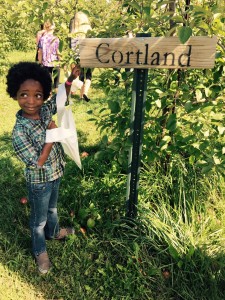 Every year, for the past four years, Cortland Preschool, with the help of Mary Artibee and Milt Mallory, our families, friends, and Cortland community members, has provided full and partial scholarships for families with financial need. Recipients are always kept confidential, but sometimes a family will opt to share a thank you with the community upon graduation.
Every year, for the past four years, Cortland Preschool, with the help of Mary Artibee and Milt Mallory, our families, friends, and Cortland community members, has provided full and partial scholarships for families with financial need. Recipients are always kept confidential, but sometimes a family will opt to share a thank you with the community upon graduation.



